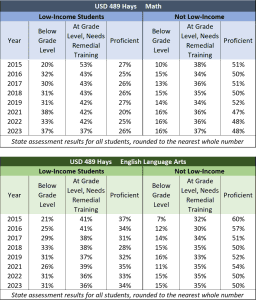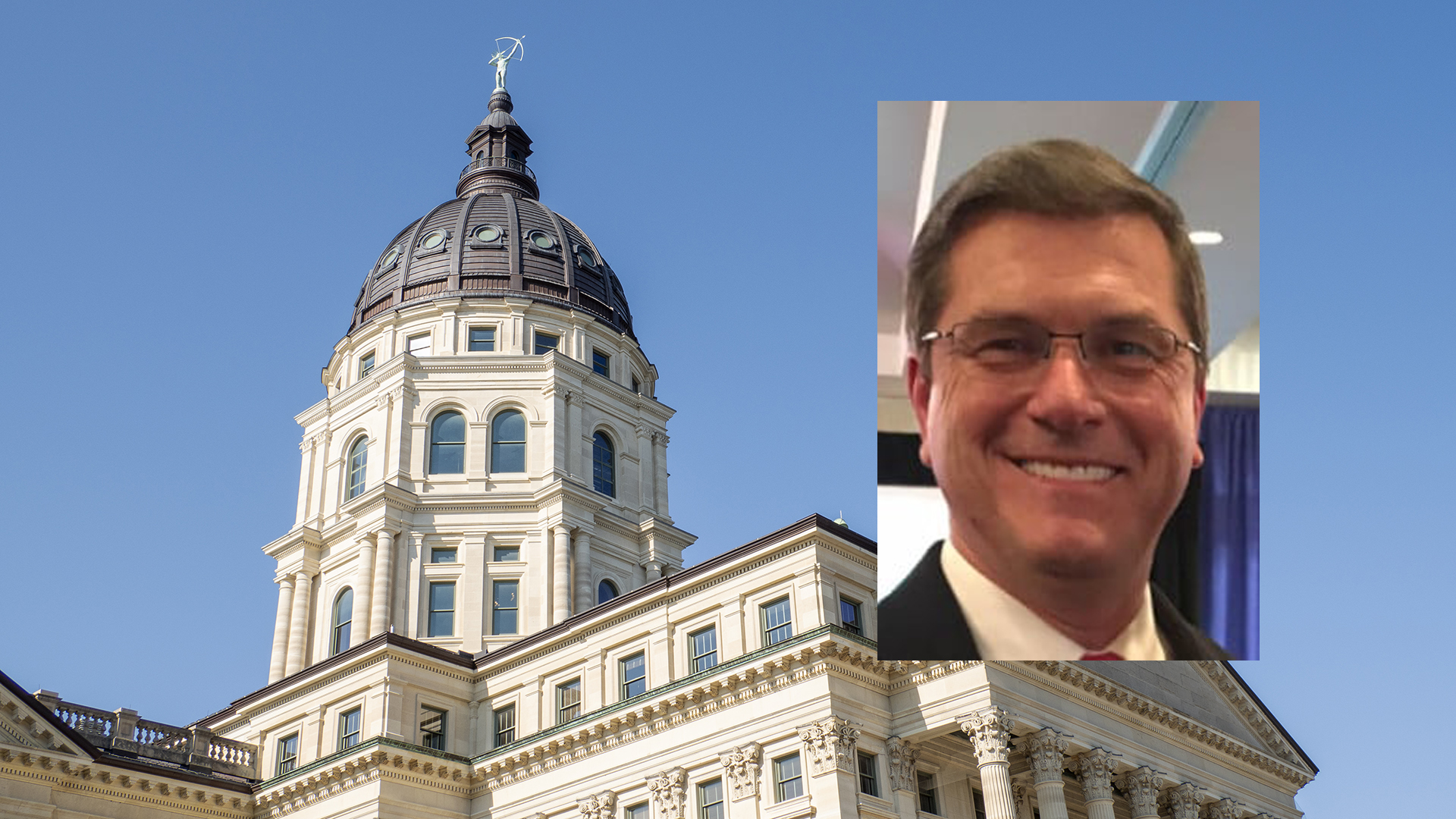If Benjamin Franklin were alive today, he might say there are three things you can count on – death, taxes, and the Kansas Association of School Boards putting a positive spin on declining student outcomes.

A March 26 column by KASB’s Mark Tallman touts state assessment results at USD 489 Hays as exceeding projections, calling them “some of the highest student success results in the state when considering its enrollment and student demographics. Based on the actual data, that’s like saying a baseball team’s batting average on cloudy days for left-handed hitters is a little better than expected. The characterization is meaningless, which is how KASB and many education officials want it. No specific outcome data, just hard-spun generalizations.
State assessment results show that 37% of low-income students in USD 489 are below grade level in math, and only 26% are proficient; that is worse than in pre-pandemic 2019 results, which were below 2015 levels. The same is true for students who are not low-income.
In English Language Arts, 31% of low-income students are below grade level, and 34% are proficient. That is worse than in 2015 and about the same as in 2019.
Outcomes for students who are not low-income are worse than in 2015 and 2019.
KASB says USD 489 Hays is among “some of the most successful and improving schools.” Some students are undoubtedly doing well, as in every district, but many are not.
The table above measures outcomes for all students tested in Grades 3-8 and 10, but results are considerably lower for just the 10th Grade.
- 53% of low-income students are below grade level in math, and only 11% are proficient.
- 27% of students who aren’t low-income are below grade level in math, with just 39% proficient.
- 36% of low-income students cannot read at grade level, and only 22% are proficient.
- 23% of students who aren’t low-income cannot read at grade level, with just 39% proficient.
The staff at USD 489 is undoubtedly working hard to implement the strategies developed by district management, but far too many students are being left behind, and that won’t change if district administrators pretend all is well and keep doing what is delivering the current outcomes.
The Kansas Association of School Boards spinning serious issues into rainbows only makes matters worse for students who are being left behind.

Dave Trabert – The Sentinel
Dave Trabert is director of The Kansas Policy Institute, which owns The Sentinel. See more at: www. sentinelksmo.org





Statistics and scientific method must not be part of KS public education; USD497 recently released their own version of self-justification for closing neighborhood schools (ummm, but gee… only in older Lawrence neighborhoods). See https://lawrencekstimes.com/2024/04/08/usd497bdpre-20240410/ for the District’s release.
So, the District report says:
“According to the agenda item, the data shows that Pinckney and Broken Arrow students who transferred to one of the other 11 elementary schools or moved on to one of the four middle schools were absent less during the 2023-24 year at their current schools compared to the 2022-23 year at their previous schools.”
And then it says:
“To understand more about the impact of these transfers on our students, we looked at attendance and behavior data for students who attended Broken Arrow and Pinckney in 2022-23,” the agenda item says. “We then compared that cohort of students’ attendance and behavior data at their new school.”
BUT, right after that we see:
“The agenda item did not include [emphasis is mine] potential causes for the improved attendance and behavior or other analyses, nor data sets. [my emphasis again]”
Hmmmm… So, you [the District] won’t make public the data; you won’t even mention that 2022 in particular was still a year of COVID apprehension (with the initial appearance of RSV) and maayyyybe THAT would’ve affected attendance; you won’t tell us if students who were doing remote-learning were scored as absent from classrooms; and you won’t account for students whose disgusted parents enrolled them in private schools.
Sooo, I’m sorta thinking that the solution to their statistical equation = BS, which here doesn’t refer to a post-secondary degree.